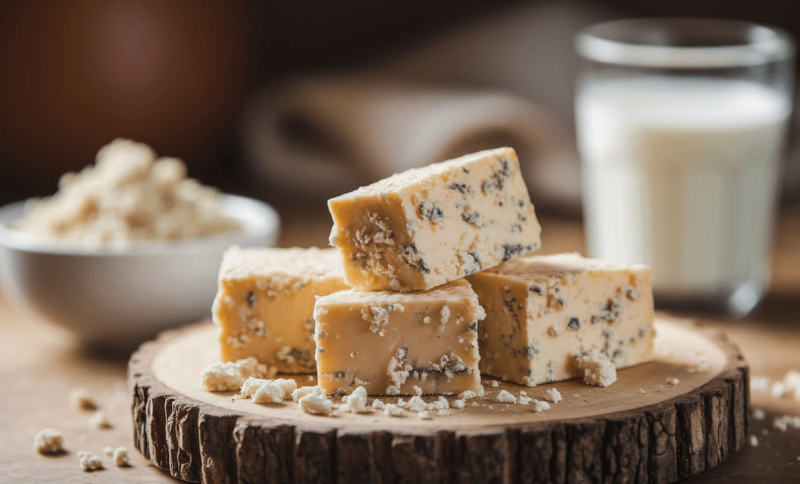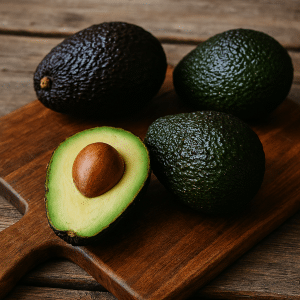Picture this: someone stands in the grocery store cheese aisle, staring longingly at the cotija crumbles. Their stomach already starts to rumble just thinking about it.
For people with lactose intolerance, cheese shopping feels like walking through a minefield. One wrong choice can lead to hours of discomfort later.
But cotija cheese keeps calling their name – that salty, crumbly goodness perfect for tacos and salads.
Here lies the big question: can lactose-intolerant folks actually enjoy cotija without paying the price? The answer might surprise many cheese lovers who’ve been playing it safe for years.
This post breaks down everything you need to know about Cotija cheese and lactose intolerance. No medical jargon, no confusing terms, just straight talk about whether this beloved Mexican cheese deserves a spot in their fridge.
What is Cotija Cheese, and Why is it Popular?
Cotija cheese is a traditional Mexican cheese made from cow’s milk. It has a firm, crumbly texture and a bold, salty flavor that makes it stand out in many dishes.
Named after the town of Cotija in Michoacán, this cheese adds a rich, savory note wherever it’s used.
You’ll often see Cotija sprinkled over popular Mexican favorites, such as tacos, elotes (Mexican street corn), and fresh salads.
Its ability to enhance flavor without overpowering a dish is one of the reasons it’s so beloved in both home kitchens and restaurants.
Aged Cotija is frequently compared to Parmesan cheese. Both share a dry, crumbly texture and a salty, umami-rich taste that works beautifully as a topping or flavor booster.
Whether freshly crumbled or aged and grated, Cotija is a go-to finishing touch for a burst of flavor.
Does Cotija Cheese Contain Lactose?

Lactose is a natural sugar found in milk and most dairy products. It’s the ingredient that can cause digestive discomfort for people who are lactose intolerant.
Since Cotija cheese is made from cow’s milk, it does initially contain lactose. However, the aging process plays a big role in changing that.
As Cotija matures, beneficial bacteria break down a significant portion of the lactose over time.
This means aged Cotija typically contains only trace amounts of lactose, often low enough for many people with lactose sensitivity to tolerate. Still, tolerance can vary, so it’s best to check with a healthcare provider if you’re unsure.
Aged vs. Fresh Cotija: Lactose Level Differences?
Cotija cheese comes in two forms, fresh and aged, and they differ in more than taste.
One key difference is the amount of lactose that remains after aging, which affects how easily it’s digested.
| Basis | Fresh Cotija | Aged Cotija (Cotija Añejo) |
|---|---|---|
| Aging Period | Short-aged (a few weeks) | Aged for several months |
| Texture & Flavor | Softer, crumbly, mild, and salty | Dry, firm, Parmesan-like; richer, sharper flavor |
| Lactose Content | Contains more lactose | Much lower in lactose due to extended aging |
| Tolerability | May cause discomfort in lactose-sensitive individuals | Often better tolerated by those with lactose sensitivity |
| Best Used For | Topping tacos, salads, and elotes | Grating over pasta, beans, and roasted vegetables |
Is Cotija Cheese Safe for Lactose-Intolerant People?
For many people with lactose intolerance, aged cheeses like Cotija can be surprisingly tolerable. The longer aging process breaks down most of the lactose, making aged Cotija (Cotija Añejo) a safer option in small portions. Still, everyone’s digestive response is different.
-
Aged Cotija has minimal lactose, making it often suitable for individuals with lactose sensitivity.
-
Small portions are key, start with a sprinkle to see how your body reacts.
-
Fresh Cotija contains more lactose, so it may be harder to tolerate for some.
-
Individual tolerance varies, so listen to your body and consult a healthcare provider if unsure.
Lactose in Cotija vs Other Cheeses
Lactose levels vary widely across cheeses, depending on their aging process and moisture content.
Cotija, especially the aged variety, has low lactose content, similar to hard cheeses like Parmesan and Cheddar. In contrast, softer cheeses like mozzarella tend to retain more lactose.
Lactose Content Comparison (Per 1 oz Serving)
| Cheese Type | Lactose Content | Lactose Tolerance Tip |
|---|---|---|
| Aged Cotija | ~0.1–0.5g | Often safe for lactose-intolerant individuals |
| Parmesan | ~0.1g | Very low; typically well-tolerated |
| Cheddar (Aged) | ~0.1–0.5g | Low; usually safe in small amounts |
| Mozzarella (Fresh) | ~0.7–1g | Higher lactose may cause discomfort |
Hard, aged cheeses typically contain significantly less lactose than their fresh, soft counterparts, making them a better option for those with lactose sensitivity.
Tips for Enjoying Cotija Cheese with Lactose Intolerance

You don’t have to give up Cotija cheese if you’re lactose intolerant; enjoy it mindfully. With a few simple strategies, you can savor the flavor without the discomfort.
-
Start small: Try just a sprinkle of Cotija and see how your body reacts before using more.
-
Choose aged Cotija: The longer it’s aged, the less lactose it contains, making it easier to digest.
-
Pair wisely: Combine Cotija with other low-lactose or lactose-free foods to lighten the impact.
-
Keep lactase supplements on hand: Over-the-counter enzymes can help break down lactose if needed.
These simple tips can help you enjoy Cotija with confidence and comfort.
Alternatives to Cotija for the Highly Sensitive

If you’re highly lactose intolerant or need to avoid dairy altogether, there are still tasty ways to enjoy a cheesy touch in your meals. Here are some great substitutes that mimic Cotija’s flavor or texture without the lactose:
-
Lactose-Free Parmesan: Aged and dry, this cheese has a similar salty, umami flavor with zero lactose.
-
Vegan Cheese Crumbles: Plant-based and dairy-free, these are perfect for topping tacos and salads.
-
Nutritional Yeast: A flaky, non-dairy option with a savory, cheesy taste—great for sprinkling on veggies or popcorn.
-
Tofu Feta: Crumbled firm tofu, marinated in lemon and salt, provides a tangy, salty alternative with a similar texture.
These options help you enjoy bold flavor without worrying about dairy discomfort.
When to Avoid Cotija Cheese Completely
While many people with mild lactose intolerance can enjoy Cotija in moderation, there are times when it’s best to avoid it altogether. If you have severe lactose intolerance, even small amounts of lactose can lead to uncomfortable symptoms.
Cotija should also be avoided by anyone with a milk allergy, which is an immune reaction and far more serious than lactose sensitivity.
Additionally, if you don’t have access to aged Cotija and can’t confirm its lactose content, it’s safer to skip it, since fresh Cotija contains more lactose.
When in doubt or unsure how your body might react, it’s always a good idea to consult with a doctor or dietitian before incorporating Cotija into your meals.
The Bottom Line
Cotija cheese turns out to be a friend, not a foe, for most people dealing with lactose troubles. The aging process does the heavy lifting here, breaking down most of that troublesome lactose.
Sure, everyone’s body reacts differently. Some folks might still feel a bit off after eating it. However, for many, this crumbly Mexican cheese opens up a whole new world of flavors without the usual stomachache.
The key is to start small and listen to what the body says. A little sprinkle on tacos today, maybe a bit more tomorrow.
What’s been your experience with aged cheeses? Drop a comment below and share your story. If you found this helpful, be sure to check out our other posts on lactose-friendly foods that might surprise you.













